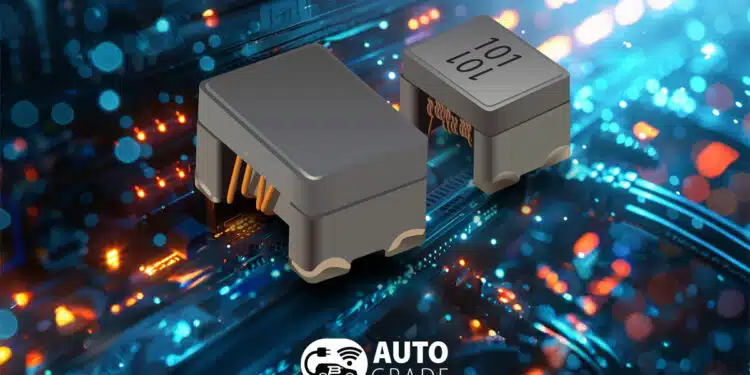Bourns, Inc., a leading manufacturer and supplier of electronic components for power, protection, and sensing solutions, today announced two new AEC-Q200 compliant, automotive-grade common mode SMD chip inductor model series.
Bourns Model SRF4532TA is designed to withstand current up to 4 A, and Bourns Model SRF3225TABG meets Open Alliance 1000Base-T1 Automotive Ethernet requirements.
These common mode chip inductors are ideal as noise suppression solutions in Advanced Driver-Assistance Systems (ADAS) infotainment, body electronics, and many other automotive applications.
The Model SRF3225TABG is specifically designed for noise suppression in 1000Base-T1 Ethernet applications.
Offered in a compact footprint, both common mode chip inductor model series are designed with a ferrite core, providing high impedance across a broad frequency range to suppress unwanted incoming or outgoing EMI signals.
These common mode chip inductors address stringent shock and vibration requirements, as the core is constructed with 0.3/0.4 mm high sidewall terminals that help to enhance the component’s mechanical strength on the PCB. The Model SRF4532TA and SRF3225TABG Series also feature shielded construction for low radiation and have an operating temperature range of -55 to +125 °C and -40 to +125 °C, respectively.
Features
- Shielded construction – low radiation
- Impedance range: 90 ~ 2800 Ω @100 MHz
- High current up to 4 A
- Compact size
- AEC-Q200 compliant
- RoHS compliant and halogen free
Applications
- EMI suppression
- Noise filters































